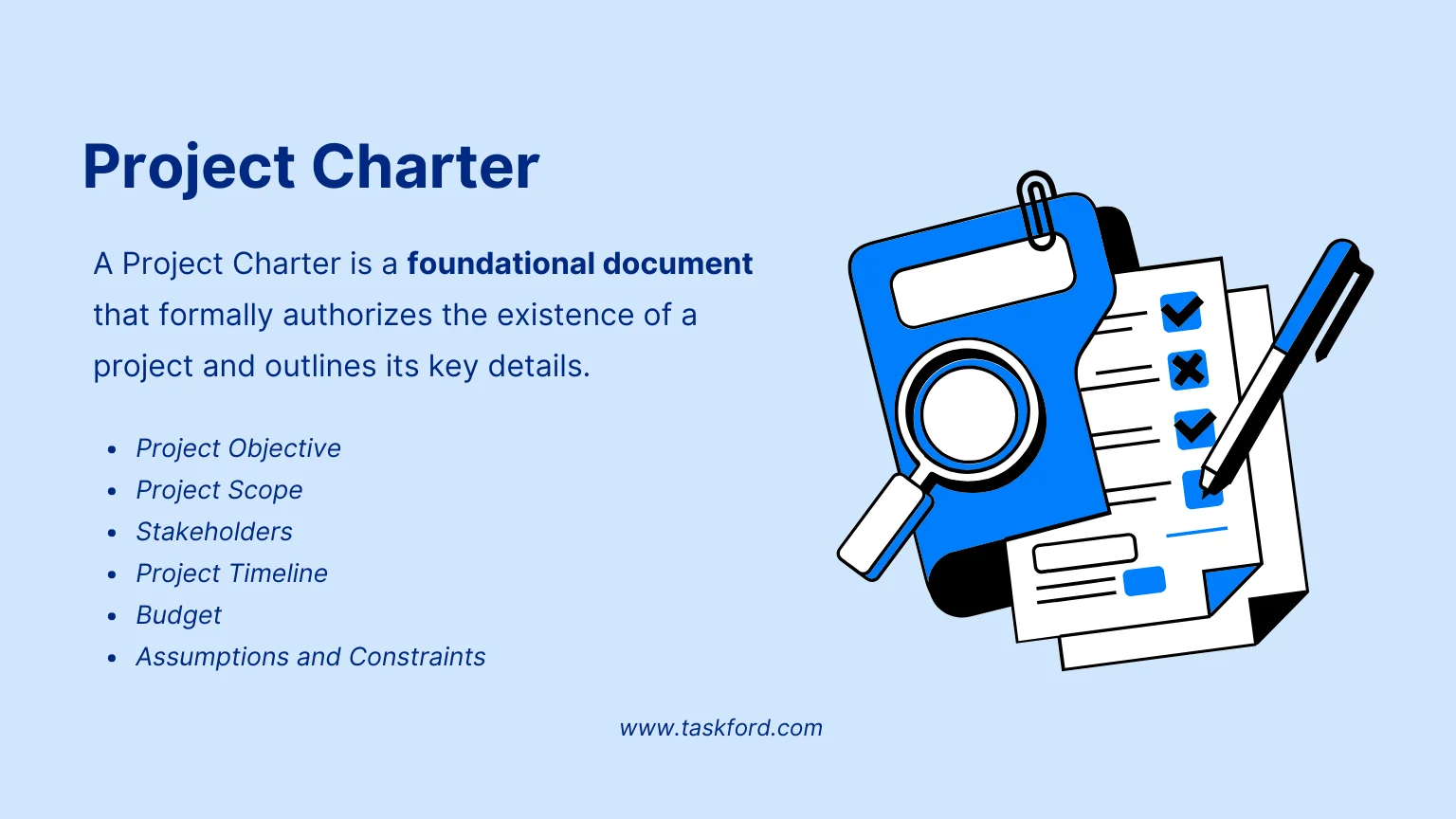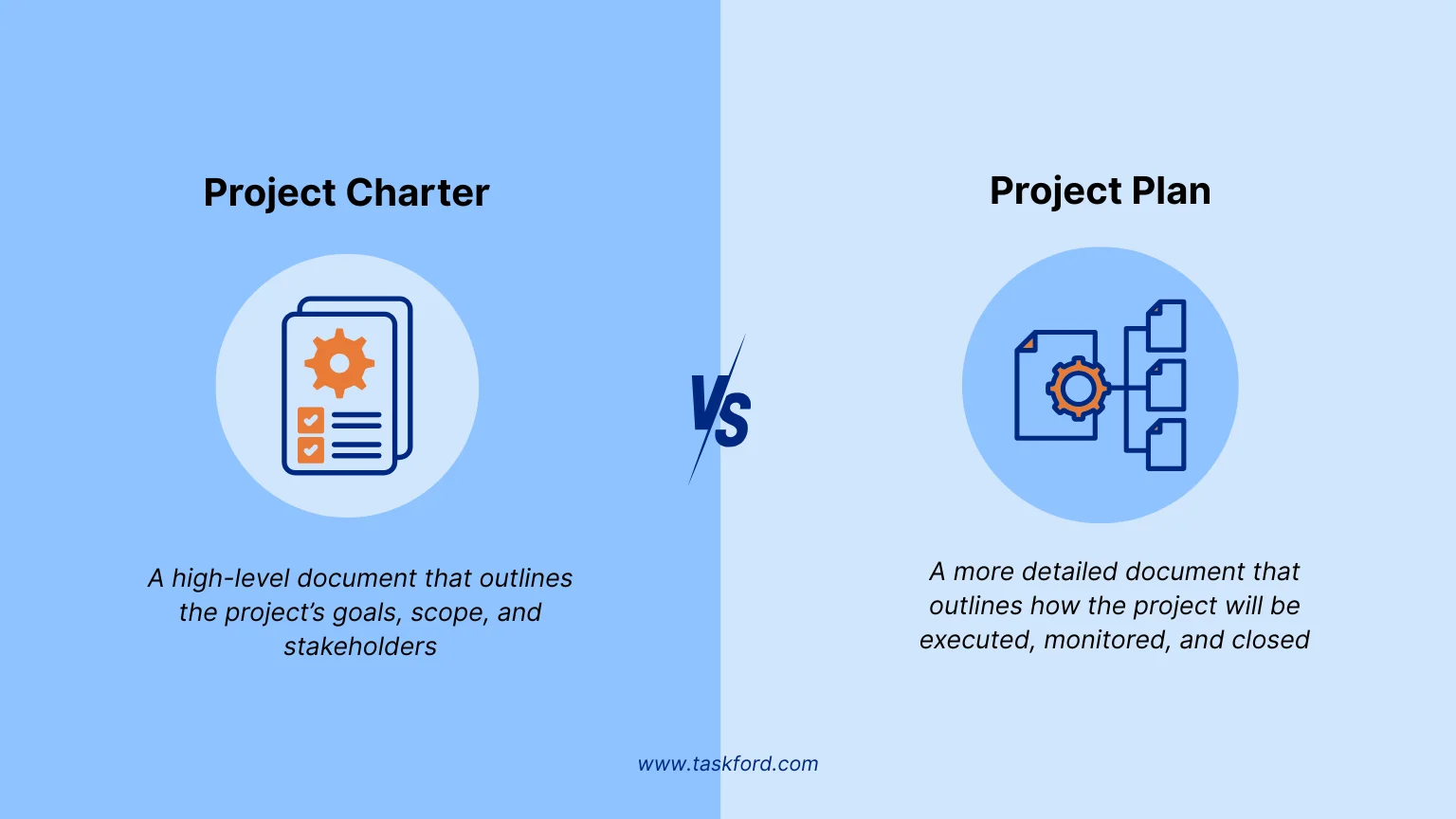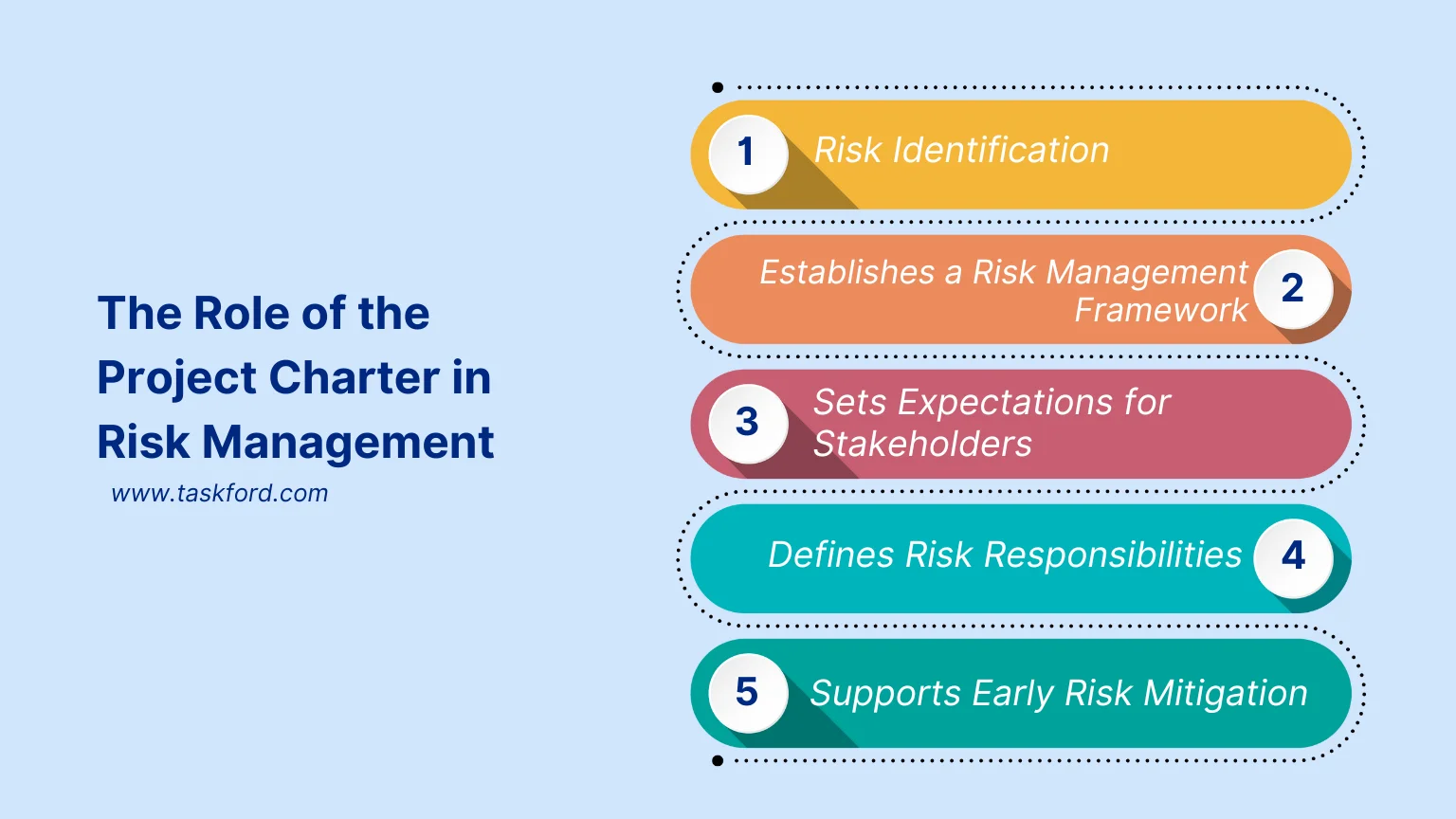How the Project Charter Helps Identify and Mitigate Risks from the Start
Learn how using a Project Charter can help you identify project risks from the start. Follow our guide to manage risks and set your project up for success.
In any project, risks are inevitable, but how you manage them can make all the difference between success and failure. Identifying and mitigating risks early on is crucial to ensuring that a project stays on track and delivers its objectives within scope, time, and budget.
One of the most powerful tools for managing risks from the start is the Project Charter. This essential document not only outlines the scope and goals of the project but also serves as a proactive approach to recognizing potential risks and planning strategies to mitigate them.
In this guide, we’ll explore how a well-constructed Project Charter can help you identify project risks early and set a solid foundation for risk management throughout the project lifecycle.
What is a Project Charter?
A Project Charter is a foundational document that formally authorizes the existence of a project and outlines its key details. It serves as a reference point throughout the project lifecycle, providing clarity on the project’s objectives, scope, and stakeholders. Typically created during the initiation phase, it helps to define the project’s purpose, goals, and deliverables, ensuring that everyone involved is aligned from the outset.

Key components of a Project Charter typically include:
- Project Objectives: Clear, measurable goals that the project aims to achieve.
- Scope: Defines the boundaries of the project, outlining what is included and what is excluded.
- Stakeholders: A list of key stakeholders, including project sponsors, team members, and external partners.
- Project Timeline: High-level milestones and deadlines that set the pace for the project.
- Budget: An overview of the project’s estimated costs and financial resources.
- Assumptions and Constraints: Any known factors that could impact the project’s success, such as resource limitations or external dependencies.
This framework is essential for gaining formal approval from stakeholders and securing the resources necessary for the project to proceed. It also serves as a key tool for risk management by identifying potential risks and setting a framework for addressing them throughout the project.
Who Initiates and is Responsible for the Project Charter?
Typically initiated by the project sponsor or the project manager. The sponsor is usually responsible for approving the charter, while the project manager is responsible for its creation and ensuring alignment with project goals and scope.
Read also: Types of Project Manager - Roles, Skills, and Work Environments
Key Difference Between Project Charter and Project Plan
The Project Charter is a high-level document that outlines the project’s goals, scope, and stakeholders. It authorizes the project and sets the foundation for its initiation.
In contrast, the Project Plan is a more detailed document that outlines how the project will be executed, monitored, and closed. The Project Plan includes timelines, tasks, resources, and detailed risk management strategies, while the document is a broad outline to get the project started.
Read also: How to Create a Project Plan

Why Project Charter Matters
This guiding document is essential for setting the foundation of any project. Here’s why it matters:
- Authorization: It formally authorizes the project to proceed, giving the project team the green light to begin work.
- Clarity: It defines the project’s goals, scope, and deliverables, ensuring all stakeholders are aligned on expectations.
- Stakeholder Alignment: It identifies key stakeholders and their roles, fostering clear communication and collaboration.
- Risk Management: It helps identify potential risks early, laying the groundwork for a risk management plan.
- Resources and Budget: It helps secure the necessary resources and budget by outlining the project’s needs.
- Accountability: It establishes clear authority and responsibility, ensuring effective project leadership.
- Guides Decision Making: It serves as a reference for maintaining focus and making decisions aligned with the project’s objectives.
In short, the document provides direction, clarity, and accountability, ensuring a project stays on track and has the resources needed to succeed.
The Role of the Project Charter in Risk Management
The Project Charter plays a critical role in the early stages of risk management by setting the foundation for identifying and addressing potential risks throughout the project.
Here’s how it contributes to effective risk management:

1. Risk Identification
The Project Charter helps identify potential risks by defining the project’s scope, objectives, and stakeholders. Understanding these elements early allows the project team to recognize areas where risks may arise, such as resource constraints, technical challenges, or external factors.
Read also: How AI Can Help You Spot Project Risks Early
2. Establishes a Risk Management Framework
The Charter outlines the overall approach to risk management, helping the project team understand how risks will be monitored, assessed, and mitigated. This framework serves as a guideline for managing risks throughout the project lifecycle.
3. Sets Expectations for Stakeholders
By identifying key stakeholders in the Project Charter, the document ensures that all parties are aware of potential risks and are aligned on risk mitigation strategies. Clear communication of risks helps manage stakeholder expectations and fosters collaboration in risk management efforts.
4. Defines Risk Responsibilities
The Project Charter establishes roles and responsibilities for risk management. This clarity ensures that specific team members are tasked with monitoring, reporting, and mitigating risks, which helps in proactive risk management.
5. Supports Early Risk Mitigation
With early identification of risks, the foundational plan provides the foundation for developing strategies to mitigate these risks before they impact the project. Whether through contingency planning, resource allocation, or adjusting timelines, the Project Charter sets the stage for mitigating risks early on.
In essence, the document is a key tool in laying the groundwork for comprehensive risk management. By identifying risks early, defining responsibilities, and setting expectations, it helps ensure the project is better prepared to handle potential challenges and stay on course.
Key Components of the Project Charter for Risk Identification
It is crucial for identifying potential risks early in the project. Several key components of the Charter directly contribute to understanding and managing risks.
1. Project Scope
Project scope defines the boundaries of the project—what is included and excluded. A well-defined scope helps identify risks related to scope creep, misunderstandings, and potential gaps in deliverables.
2. Objectives and Goals
The objectives and goals set clear expectations for what the project aims to achieve. Misaligned or unclear objectives can create risks related to project outcomes, timelines, and resource allocation.
3. Stakeholder Analysis
Understanding the needs and expectations of project stakeholders helps identify risks related to communication gaps, conflicting priorities, or stakeholder dissatisfaction. This ensures alignment from the start.
4. Assumptions and Constraints
The assumptions and constraints section outlines factors that the project relies on or limitations that could affect progress. Risks arise when assumptions prove incorrect or constraints are not addressed properly.
5. High-Level Timeline and Milestones
The timeline and milestones provide a framework for identifying risks related to scheduling, delays, and resource allocation. Unclear or unrealistic timelines can lead to significant risks like cost overruns or missed deadlines.
These five components of the document are essential for identifying potential risks early, setting the stage for effective risk management throughout the project.
How to Build a Project Charter That Helps Mitigate Risks
To build a Project Charter that effectively mitigates risks, it’s essential to address the “Why”, “What”, and “Who”. These elements help ensure clarity, alignment, and proactive risk management from the start.

WHY - Why the Project Charter Matters in Risk Mitigation
The Project Charter acts as a strategic tool to outline the project’s purpose, objectives, and key stakeholders. By establishing these elements upfront, it helps project teams identify potential risks early in the planning process. With a clear vision of the project’s goals and boundaries, the team can spot risks related to scope creep, resource constraints, or external factors that could derail the project’s success.
WHAT - What to Include in a Project Charter to Address Risks
- Project Scope: Clearly define the boundaries of the project, including deliverables and outcomes. A well-defined scope helps prevent scope creep and manages expectations, which can mitigate risks related to misalignment and project delays.
- Risk Register: Include a preliminary list of identified risks. Even though this may evolve as the project progresses, starting with a clear set of risks allows the project team to anticipate challenges and start planning mitigation strategies.
- Stakeholder Analysis: A detailed analysis of stakeholders, their expectations, and how their needs might pose risks to the project. Identifying key stakeholders early can help manage communication risks and ensure proper engagement.
- Risk Mitigation Strategies: Outline initial strategies for addressing the most significant risks identified in the early stages of the project. These strategies provide a proactive approach to tackling risks head-on.
- Project Timeline and Milestones: Define key deadlines and deliverables. This helps identify risks related to unrealistic timelines or dependencies that could hinder the project’s progress.
WHO - Who is Responsible for the Project Charter in Risk Mitigation
The project manager typically spearheads the creation of the Project Charter, but collaboration is crucial. Other key contributors include:
- Project Sponsor: Provides the overall vision and ensures alignment with organizational goals. They help define the risk tolerance for the project.
- Stakeholders: While they may not directly create the charter, their input is crucial in identifying risks, particularly those relating to project scope and external factors.
- Project Team Members: While they might not directly create the Charter, their input is crucial in identifying potential risks and challenges based on their expertise and experience.
Conclusion
The Project Charter is an essential tool for both identifying and mitigating risks early in the project lifecycle. By setting clear objectives, defining the scope, aligning stakeholders, and outlining a risk management plan, the framework helps create a structured approach to managing potential issues before they escalate. Proactively addressing risks through the Charter ensures the project stays on track, within budget, and meets its deadlines. In the end, a well-crafted foundational plan not only lays the foundation for project success but also empowers the project team to handle challenges effectively and with confidence.
You may also like:
- RAID Project Management - When, Why, and How to Use It for Stakeholder Updates.
- Types of Risks in Project Management - Every Manager Should Know.
- Risk Assessment Matrix - How to Use the Matrix for Smarter Project Planning.
Subscribe for Expert Tips
Unlock expert insights and stay ahead with TaskFord. Sign up now to receive valuable tips, strategies, and updates directly in your inbox.